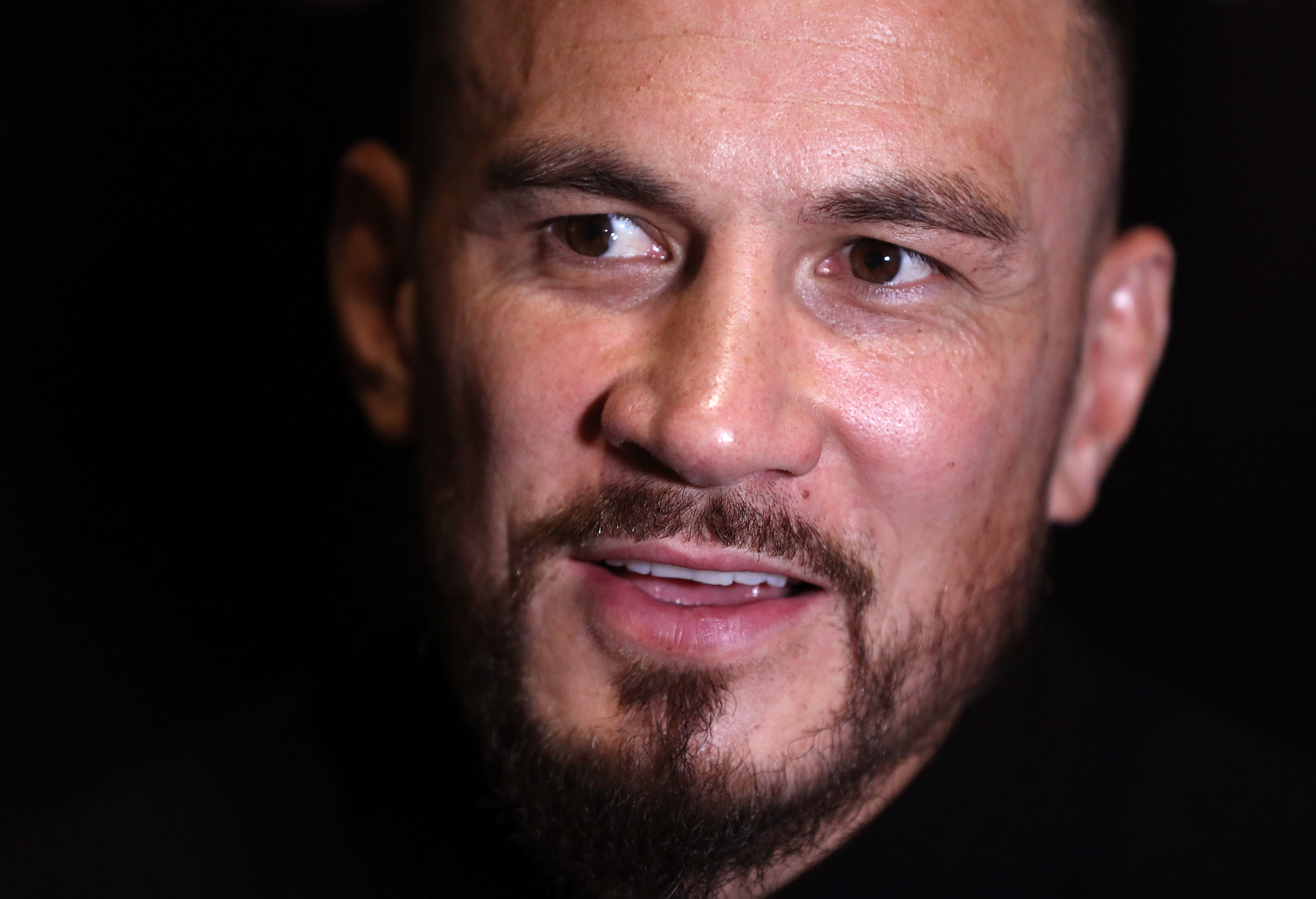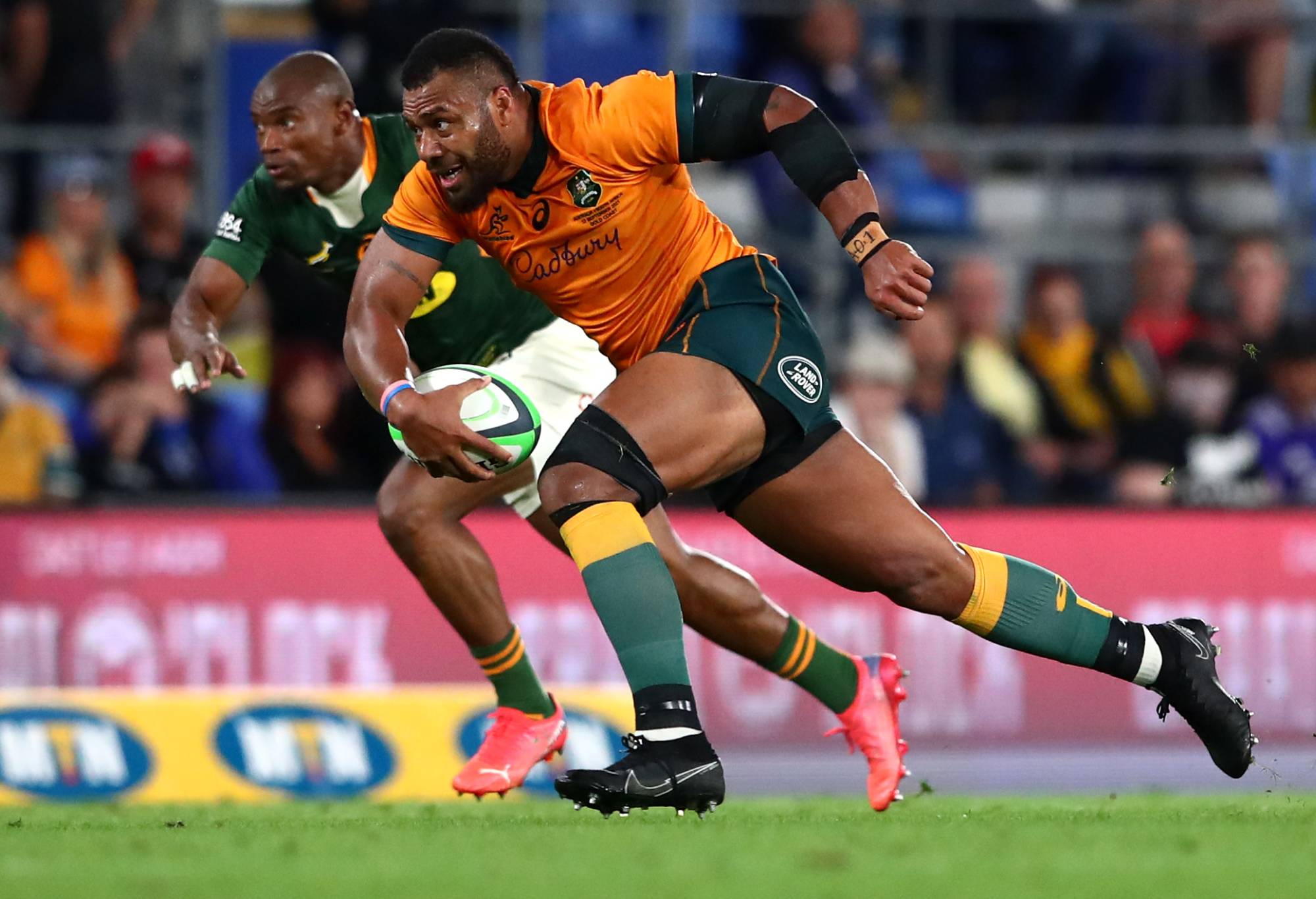The twelve. The inside man. The second five-eighth. The back plucked from the pack. The third flank. The missing link between league and union.
The mystery man. Ambiguously attending parties and vanishing without a word. The best chef in the squad but seldom spotted eating.
A nine sharpens his mind by narrowing it. A 12 seems often to have lost his mind altogether. He is the player most likely to recite a poem when drunk.
The flyhalf gets blamed or praised for how times wings see the pill, but it in the violent midfield where the die is cast. Small wonder twelves are a bit weird.
Philippe Sella was said to have the strength of a bull and the touch of a piano player but many twelves will also destroy a piano on a good night out.
Mr. January in the club calendar and Mr. Inbetween in the off season; the inside centre spends the most on threads, kicks, exfoliant and self-help books.
In a “Mr. Inbetween” episode titled “On Behalf of Society,” Sydney hitman Ray Shoesmith explains why he lays down the law of the street: respect rises when consequences are immediate. One feels Ma’a Nonu nodding along with Ray, who would surely play twelve like Brian Lima, rearranging ribcages and lives.
The position is unusual because there is a schism in what coaches want from it. The power twelve is ascendent with teams toying with a ten-twelve (like England did with Owen Farrell, as hard a ten as ever played, but not a fearsome twelve) falling behind. At the moment, a ruck-target monster is the name of the game.
Matt Giteau-Matt To’omua playmakers notwithstanding (Aaron Mauger, Tana Umaga, and Christian Lealiifano wielded the same brand) most of these boyish bruisers are mystified at how rugby works and yet most likely to be on the sideline.
Jean de Villiers, Tim Horan, Jamie Roberts and Sonny Bill Williams could staff a panel show called “Pro Bros: Keeping it Simple, Dude” or “Just Run It Straight.”
We can already imagine Damian de Allende and Robbie Henshaw in tight suits on asking breathless players at oranges if they know how to adjust themselves.
To be fair, twelves cannot easily focus on rugby, with so many other pursuits beckoning. No. 12 Berrick Barnes’ seam and breaststroke was as good as his kick.
Former Springbok captain de Villiers is a crimefighting superhero, Roberts is a giant surgeon, and Williams is an ambassador for brands and for UNICEF, since he grew bored hopping through thirteen sports. Horan probably designs helmets.
Speaking of helmets, think of the shy ice hockey enforcer. Just like twelves, they have little time to think before inevitable contact. Just as an inside centre is the only back who join in the handbags and can be taken seriously, hockey enforcers love to drop the gloves and duke it out. Both are tough guys with delicate skills.
Both have to back-peddle on defence to suck opponents into a salient bubble.
In ice hockey, fighting between two players is tolerated. Nobody can pile in; unwritten rules form a ‘Code.’ The antagonists are always voluntary ‘enforcers’ and only fight until clear dominance is won. Tradition holds that this practice reduces dirty play during the game. The fighters are punished in the game: Toronto Maple Leafs enforcer Tie Domi racked up 3,515 penalty minutes in his career.
Twelves are the backs who would line up for that duty: they have the souls of inmates and stuntmen. Maybe at schools it is an enjoyable spot, but at the professional level, playing twelve is a bit of a death wish.

Sonny Bill Williams (Photo by Alex Pantling/Getty Images)
When you have a gun twelve, that fear creates space and time for everyone else. He cannot have a weak shoulder: every hit he makes is for keeps.
The scrumhalf is protected by union law and the flyhalf is both the greatest beneficiary of the offsides line and the recipient of rugby’s longest pass; but the inside centre is usually receiving man and ball like a body check in ice hockey.
Some skip passes are just twelves saying ‘nah, mate.’
His tacklers could be a loose forward or his opposite number, but many times it is two or even three lads. Preventing the offload is foremost on their minds so tackles are waist high or above, to create more torque and prevent the “Sonny Bill.”
Midfield crash-tackles between twelves are as archetypical of rugby as any play. The tackle is just the start of proceedings, now.
Teams want their big twelves to play like a seven and get over the ball. The reason why the Bok players saw de Allende as their most valuable player both in World Cups and the infamous Lions series of 2021 is he can get down and dirty.
In the 2015 Cup, de Allende completed nine pilfers without being penalised once and slowed plenty of ball, yet still crossed the carrying gain-line 49 percent of the time.
No matter his detractors, he will be one of the first players written down on the Bok teamsheet for France. The top teams know their twelves and have for a while; and are tall specimens like Williams (Henshaw, de Allende, Jordie Barrett) or are kegs like Ma’a Nonu before him (for example, France’s Jonathan Danty or backup Bundee Aki, whose Auckland father was named Hercules as predestination).
Australia has one of the best inside centres in world rugby. If Samuela (“Samu”) Vatuniveivuke Kerevi can jog, he is starting at twelve against Fiji—the land of his birth – on the seventeenth of September this year. He may be the best combination of bruiser-baller playing in the world, having added subtle footballing skills to his smashmouth runs.
In The Rugby Championship of 2021, Kerevi carried a competition-high 65 times for 585 metres; busting 21 tackle attempts and completing 8 offloads: a star. He gets the ball in front of the Wallaby forwards, who will not overpower many. He promotes space for wings who lack outright pace. His angles and vision have improved. He now delivers different types of passes (lob, skip, back, inside, switch) to open gaps, can burst through most tackles, and has stopping power.

(Photo by Chris Hyde/Getty Images)
It is not the first time Australia had the world’s best twelve. Horan was the top try-scorer with four in the successful 1991 World Cup campaign and won again in 1999 with a different midfield partner. Jason Little joked: “When I was partnering Tim we got called the world’s best centre combination – that was pretty good. Then I got dropped and Dan Herbert came in and they were the world’s best centre pair combination. I think you could have put a prop like Richard Harry outside him and they would have been the world’s best centre combination.”
Some old school centres seemed like fast stubby props (Scott ‘Car Crash’ Gibbs). Others looked like a decathlete: French legend Yannick Jauzion inherited the title of best inside centre from Horan and added six inches. Tana Umaga was a roving loose forward.
The debate around twelve ‘centres’ around whether he is more the mate of the flyhalf or the outside centre: the truth is he glues his ten and thirteen together.
Conrad Smith may have received most of the plaudits for his combination with Nonu, but the telepathy started inside, not outside. It is an instinctive position.
In Italy the role is brilliantly named: ‘Primo e Centro.’ The twelve can be more of a pivot than the pivot himself.
But will the Wallabies be able to pivot if Kerevi’s hamstring proves as fickle as so many hamstrings are? Who is the best understudy? What if Samu Kerevi out?
These are not easy boots to fill. As difficult as thirteen is to play, it is still easier to replace than twelve. At the 2019 World Cup, the outside centre was replaced twice as often as the inside centre. Not many can handle the physical demands out there on the hard ice with the hardest hits.
When Paul Cully joined our podcast for the latest episode, the three of us compared Aussie teams of the Super Rugby Pacific season and eight spots were unanimous. Notably, only three positions had three unique names: one was twelve.
We had former flanker Hamish Stewart, classic 10-12 with a smart passing game and boot; power runner Izzy Perese, and Tamati Tua, former New Zealand Under 20. The Roar’s valuable Power Rankings series had Stewart, as well as big twelve (and New Zealand-born) Lalakai Foketi and Samoa-origin Hunter Paisami.
So many of Australia’s twelve options were born in other countries; the irony is the best understudy was born in Frankston, Victoria and now plays (well) for Scotland.
Sione Tu’ipulotu handled the ball 93 times for Scotland in the 2023 Six Nations, the most of any twelve except for 10-12 Farrell (118 touches). The statistics from that tournament illustrate why twelve is increasingly specialised rather than hybrid.
Farrell carried 30 times (25 percent of his touches) for 187 metres and kicked 1,290 metres but missed 15 tackles (a quarter of his attempts), whereas Aki and Tu’ipulotu carried 45 times each (averaging over 6 metres per carry) and missed very few tackles.
Massive Andre Esterhuizen has been tearing up trees for the Harlequins in the Premiership. If citizenship were not an issue, he would surely have had twenty caps for England with his 7.8 metres per carry average over 198 carries in 21 games and a whopping 56 defenders beaten; perhaps more vitally, he was never turned over in the tackle all season.
Who would Eddie Jones choose if his ace is played out? We may find hints in how he staffed the role at England. Over the years, he debuted midfielders Piers Francis, Elliot Daly, Ben Te’o, Alex Lozowski, Ollie Lawrence, Jacob Umaga, Dan Kelly, Guy Porter, and Will Joseph, with Farrell his glue at twelve.
There is no twelve in Australia quite like Esterhuizen, or even Jordie Barrett: Stewart, Perese, Foketi and Paisami all have to crook their necks to look at the big Kiwi. They are more David Havili than Ma’a Nonu.
Would Jones want a dual first receiver in a replacement twelve? An extra boot? Or the traditional straightener? Is there a hybrid like the great Irish midfielder Mike Gibson, a coach on the pitch?
Who will be skating in the middle of the pitch if the incumbent slips on the ice?






























































































